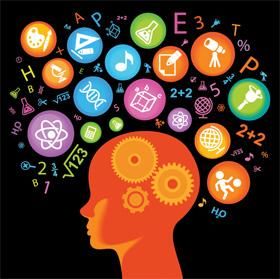Pain and ADHD

A Wandering Mind
Attention deficit/hyperactivity disorder (ADHD) is a diagnosis that welcomes sociology into medicine. According to the CDC, 5-10% of children are treated for this condition each year. ADHD was first described in 1902, but in the past 20 years there has been a marked increase in the number of children treated for behaviors that are seen as unfocused, impulsive and full of excessive energy. Is this a syndrome of the times? Has the emphasis of productivity and obedience have become such strong social norms that children who do not fit into this mold require medication and therapy?
While it is fun to think about these implications, it is clear that there are many common features and objective evidence that ADHD is an actual medical disorder that creates meaningful impairments in many lives. ADHD is associated with a higher risk of committing crimes, unemployment or underemployment, depression, social disenfranchisement and substance use disorder. Experts argue that appropriate diagnosis and treatment of this neurological condition, should be started early to improve outcomes later in life.
Chronic Pain and ADHD
A long term study found that only 15% of children diagnosed in childhood require daily medication and therapy in adulthood, however 65% were found to have ADHD in partial remission, which means symptoms occurred occasionally. Most adults develop self control, but if chronic intractable pain develops, this can certainly that can exhaust these coping mechanisms and allow ADHD to return.
In fact, a small study in 2007 by behavioral specialists linked ADHD and chronic pain and found that when adults were provided appropriate care, their pain complaints improved.
When one is easily distracted, it becomes a challenge to follow up with physical rehab plans programs or remaining focused on one single topic during behavioral therapy. In addition, one of the features of ADHD is the desire for instant gratification that some opioid medications can provide and therefore puts one at risk for misusing pills.
Declutter and Organize
Chronic pain is dramatically challenging to treat. Hard work, discipline, organization and a strong relationship with a physician who practices multidisciplinary care are the keys to success. It is important to address any mood, sleep and other mental imbalances while managing chronic pain.
What to look for?
Some features common with ADHD include:
- failing to give close attention to details, or making careless errors
- difficulty sustaining attention in tasks
- not listening when spoken to directly
- not following through on instructions or tasks
- poor organization
- avoiding tasks that require sustained, focused mental effort
- easily distracted
- impulsive speech (saying things without much control)
- short temper
- interrupting others when they talk
Everyone has elements of these features, but when they occur frequently and impair your attempts at establishing healthy behaviors, it is possible that you may have untreated ADHD.
Chronic pain does not result from this condition, and treating it will not eliminate pain. It is important to talk to your physician if you feel you may need treatment. At DVPSI we emphasize the importance of evaluating our patients holistically and we have developed a network of specialists who can diagnose and treat ADHD.


Recent Comments